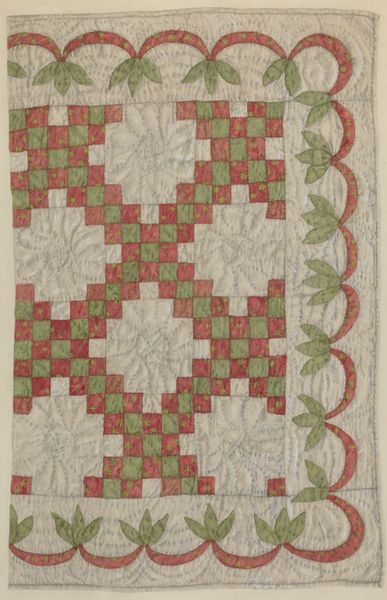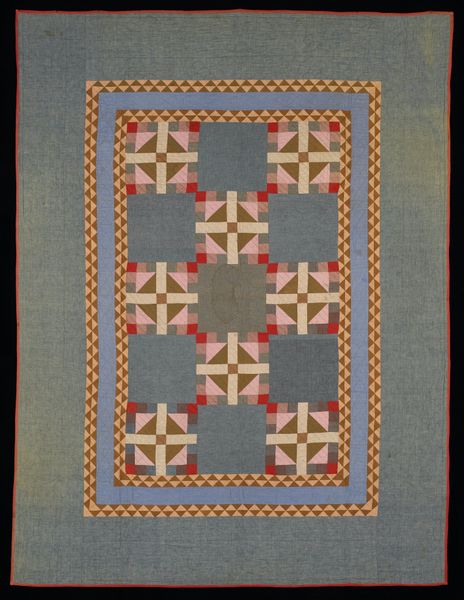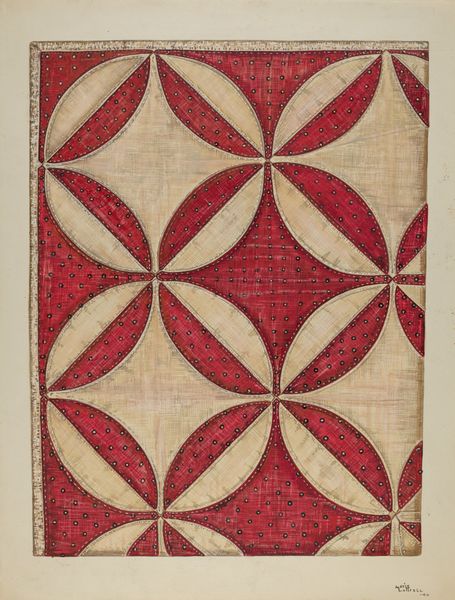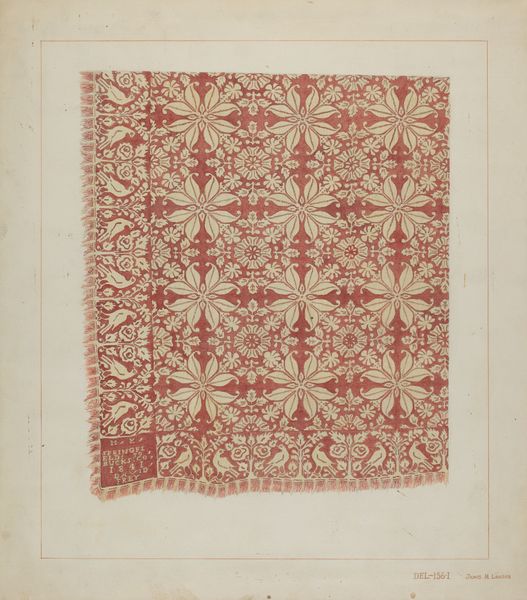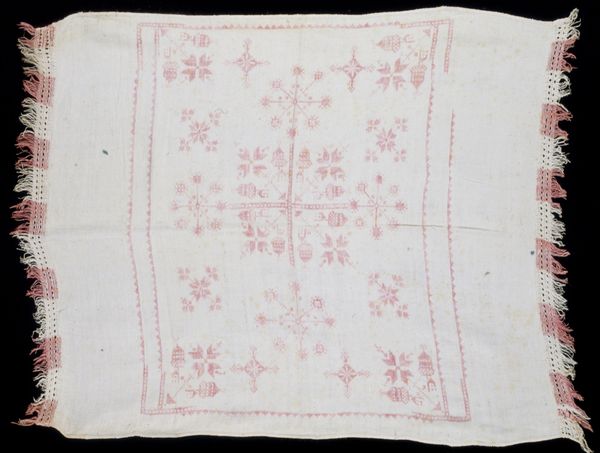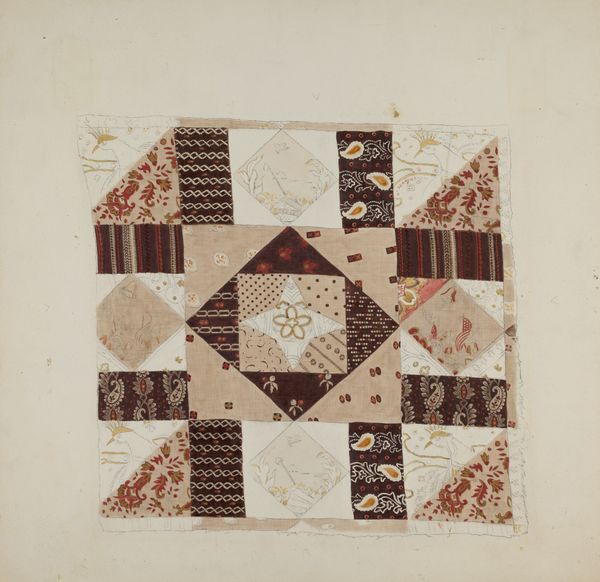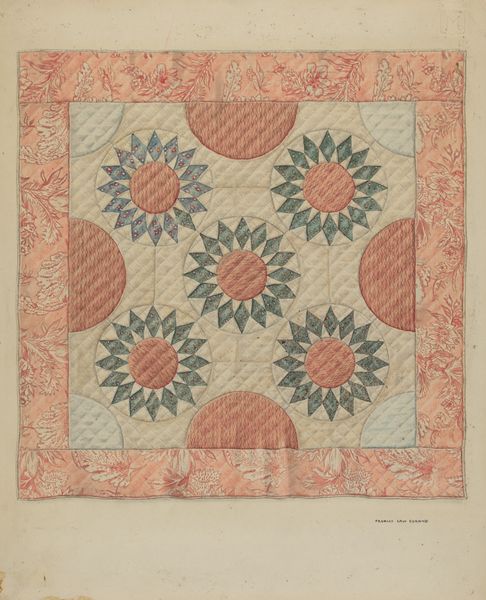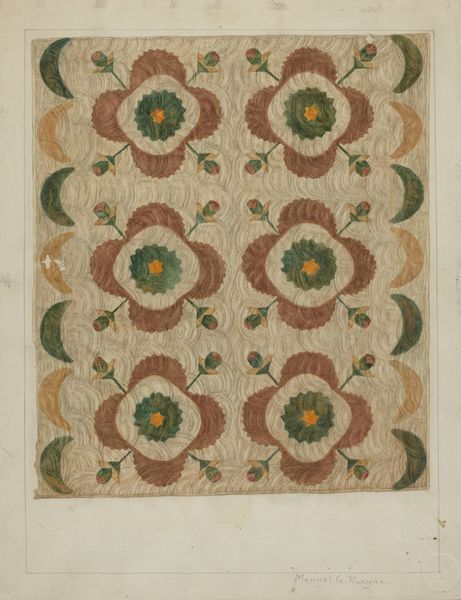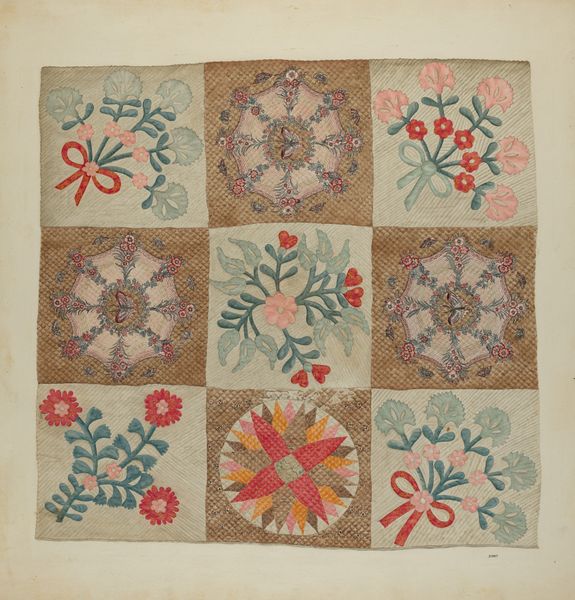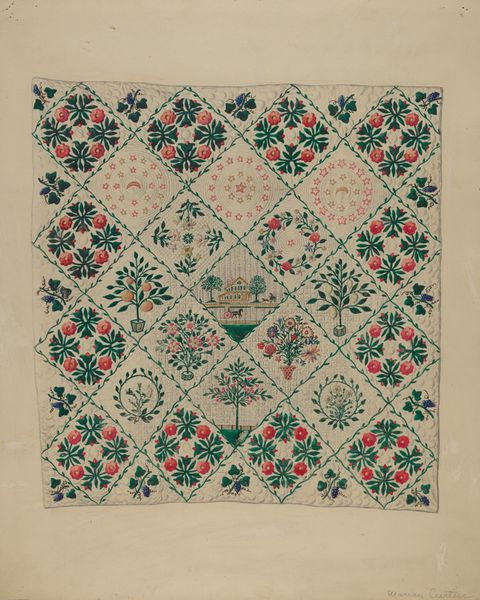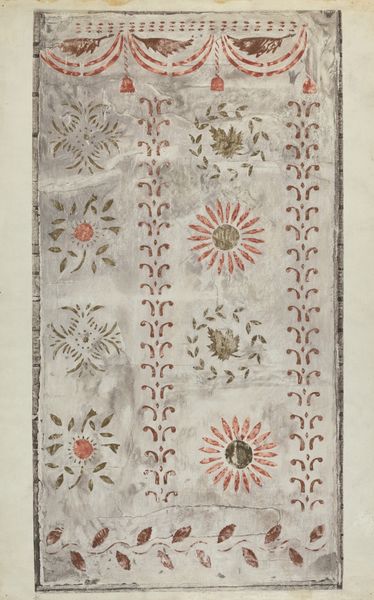
fibre-art, textile
#
fibre-art
#
folk-art
#
textile
#
folk-art
#
geometric
#
textile design
Dimensions: overall: 66 x 50.9 cm (26 x 20 1/16 in.)
Copyright: National Gallery of Art: CC0 1.0
Curator: We’re looking at “Wheel of Fortune Quilt,” a textile piece created around 1940. It exemplifies folk art and employs various media like drawing and mixed media within the broader spectrum of fiber art. Editor: My first impression is it feels incredibly tender. It’s both intricate and homespun—a visual lullaby almost. I can feel the maker’s love. Curator: Quilts, historically, functioned beyond mere utility; they acted as communal records, particularly within marginalized communities. Each stitch, pattern, and alteration signifies personal narratives interwoven with collective memories and sometimes even served as maps. Editor: I love that reading! Like an ancestor's dream journal— stitched in cloth. This one definitely sings of cycles. The repeated wheels are all about karma to me—cause, effect, destiny. Curator: Indeed. Beyond the literal geometric patterns, you see squares that are dyed pale pink and that alternate with a light uncoloured fabric, the composition reflects a deliberate structure common in quilts that speaks to more than just aesthetics, and implies social functions for example. Editor: Social function for sure! Quilts are such intimate objects. Who wouldn't pour their secrets into something they sleep beneath? See how some of the cream sections also contain stitched hearts? A personal message—whispered but seen? Curator: Quilts were certainly a crucial mode of cultural expression, enabling many to engage with artistic practices often overlooked by institutions and thus allowing women especially a unique space in public cultural life. Editor: The subtle palette makes the quilt, paradoxically, pop! These aren’t riotous hues but the effect is striking because it quietly insists you lean in. Almost a metaphor on how fortunes themselves sometimes arise, quietly, unexpected, a trick of the eye and fabric. Curator: Absolutely. And with the renewed interest in crafts and domestic arts, pieces like these compel us to reconsider art history's hierarchies and to acknowledge art’s democratic presence. Editor: I’m seeing art, yes, and also endurance—threads that weave stories beyond functionality to reveal the human impulse to imprint ourselves. Even through something as quotidian as cloth. Thanks for pointing that out.
Comments
No comments
Be the first to comment and join the conversation on the ultimate creative platform.
